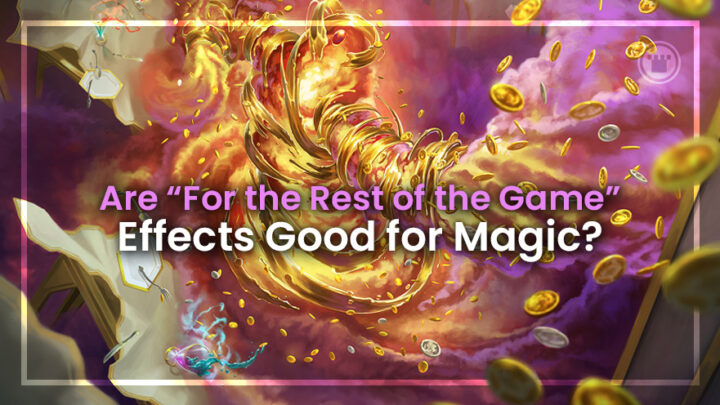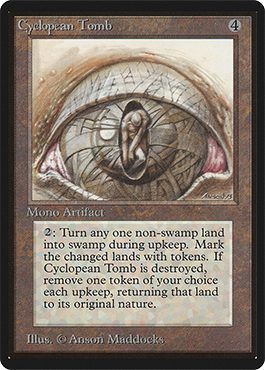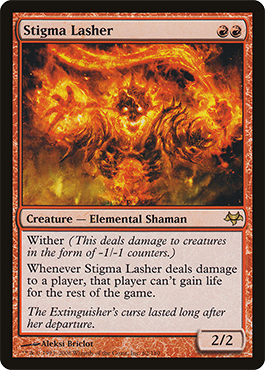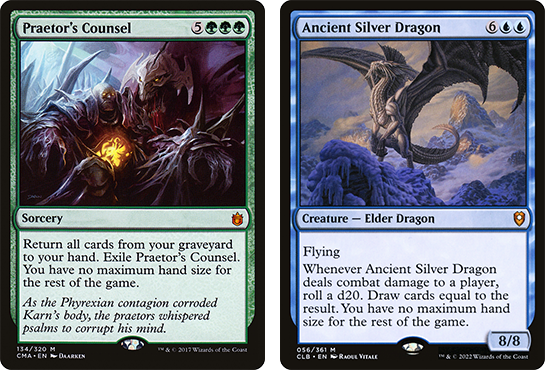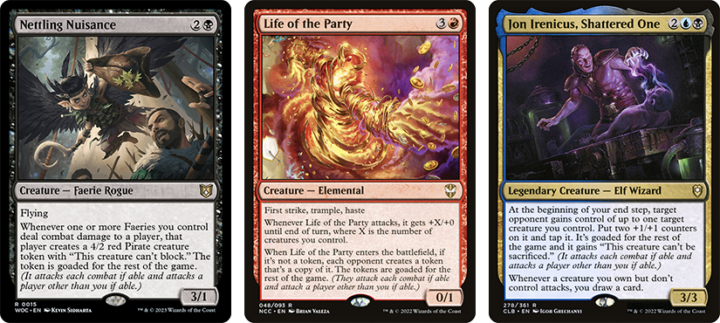Static effects that stay in effect for the remainder of the game are pretty rare in Magic. But one such card has been revealed in the early preview for Duskmourn: House of Horrors.
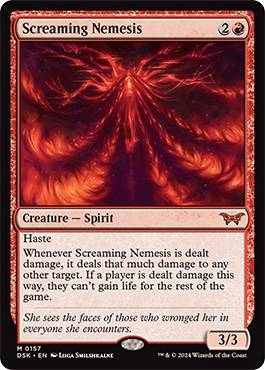
If Screaming Nemesis is dealt damage it deals that much damage to any other target and your opponent can’t gain life for the rest of the game. This card got me thinking about other effects like this, and in this article I’m going to look at the history of “for the rest of the game” effects and I’ll also evaluate how good Screaming Nemesis actually is.
A BRIEF HISTORY OF “REST OF THE GAME” EFFECTS
Counting Screaming Nemesis, there are only 10 cards in Magic with this kind of effect. They can be divided into three broad categories.
Cyclopean Tomb is the only “rest of the game” effect that has to have it’s own category, because there aren’t any other cards with its strange effect.
Cyclopean Tomb is from Alpha, making it easily the oldest card in Magic with a “rest of the game” effect. It’s super convoluted like many cards from the early days of Magic. Basically, it can turn lands into Swamps by putting mire counters on them. When the Tomb goes to the graveyard though, it sets up an upkeep trigger for the rest of the game. Each upkeep, you have to remove all mire counters from one land.
The first of these categories is cards that shut down life gain for the rest of the game. That’s right. Screaming Nemesis isn’t even the first time we saw a card that shuts down life gain for the rest of the game. Stigma Lasher was doing it way back in 2008. And in fact, it was the first time the words “rest of the game” appeared on a card. While the Tomb is worded that way today, the original text didn’t word it that way.
Half of the cards that have a “rest of the game” effect make it so you have no maximum hand size. Praetor’s Counsel is the earliest example of this, coming in 2010’s Scars of Mirrodin. The cards that have this ability tend to be capable of putting tons of cards in your hand. It would be a real bummer if you didn’t get to keep all the cards that Praetor’s Counsel or Ancient Silver Dragon gives you.
Lastly, there are three cards that can goad a creature for the remainder of the game. All three of them give your opponent a creature and then force that creature to attack another player every turn for the rest of the game, if possible. This is an interesting way to make the fact that you’ve given your opponent something hurt a little bit less, and it’s also pretty fun when it comes to flavor. These three creatures are so obnoxious that they aren’t satisfied with only goading a creature once.
THE PROBLEM WITH “REST OF THE GAME” EFFECTS
My biggest gripe with this type of effect is that they are very difficult to track. Because nothing gets put on the board to indicate a “rest of the game” effect is in force, it’s very easy for a player to forget about them. This is especially true in Commander.
If a player has shut down life gain for the rest of the game using Screaming Nemesis or Stigma Lasher, that effect sticks around even when that player gets knocked out of the game. It’s hard enough remembering that the rules of the game have changed when you’re still playing against the player who changed them. If they aren’t sitting at the table any more, it can be pretty impossible.
The most frustrating thing is that this problem could be solved if these cards made emblems. These are markers created by some cards that exist to remind you of an effect that is effectively in place “for the rest of the game.”
So far, though, emblems can only be created by planeswalkers. This makes them shy away from using them on any other card.
However, it isn’t like these cards creating emblems would make emblems less special. After all, they don’t tend to put “rest of the game” effects on Commons or Uncommons. As long as they use them sparingly, they would still feel really special.
IS SHUTTING DOWN LIFE GAIN FOR THE REST OF THE GAME TOO GOOD FOR STANDARD?
The Nemesis’s ability to shut down life gain permanently is a really big deal. This is because life gain is the main thing that keeps Red aggro and burn decks under control, especially in Standard. Screaming Nemesis can take this away entirely. And because it’s a “rest of the game” effect, there’s no way at all for your opponent to interact with it.
Mono-Red is viable in virtually every Standard format, and it doesn’t take much to accidentally make them too good. And I’m a little worried that Screaming Nemesis could be a card that unbalances things. There’s one particularly apt historical precedent that makes me especially concerned.

Rampaging Ferocidon got banned in Standard in 2018 because it made Red decks too good. Like the Nemesis, it’s a three mana 3/3 that shuts down life gain.
It’s not a perfect comparison of course. After all, the Ferocidon shuts down life gain only while it’s play, has Menace instead of haste, and has an additional ability that doles out damage.
Of course, on the flip side, the Nemesis can attack the turn it comes down. That’s something aggro decks love. It also has to get damaged for the “no more life gain” effect to kick in, and that’s not always something you always have a ton of control over. Although, just pointing your own Shock at the Nemesis means you can do 2 damage to any target and turn the effect on, so it isn’t a huge ask either.
It doesn’t take much to imbalance Red aggro decks in Standard. I hope Screaming Nemesis isn’t another card that does this. It’ll be interesting to see whether or not it does.
END STEP
What do you think? Are “rest of the game” effects good for Magic? Let me know your take on the subject over on X!

Jacob has been playing Magic for the better part of 24 years, and he especially loves playing Magic’s Limited formats. He also holds a PhD in history from the University of Oklahoma. In 2015, he started his YouTube channel, “Nizzahon Magic,” where he combines his interests with many videos covering Magic’s competitive history. When he’s not playing Magic or making Magic content, he can be found teaching college-level history courses or caring for a menagerie of pets with his wife.

